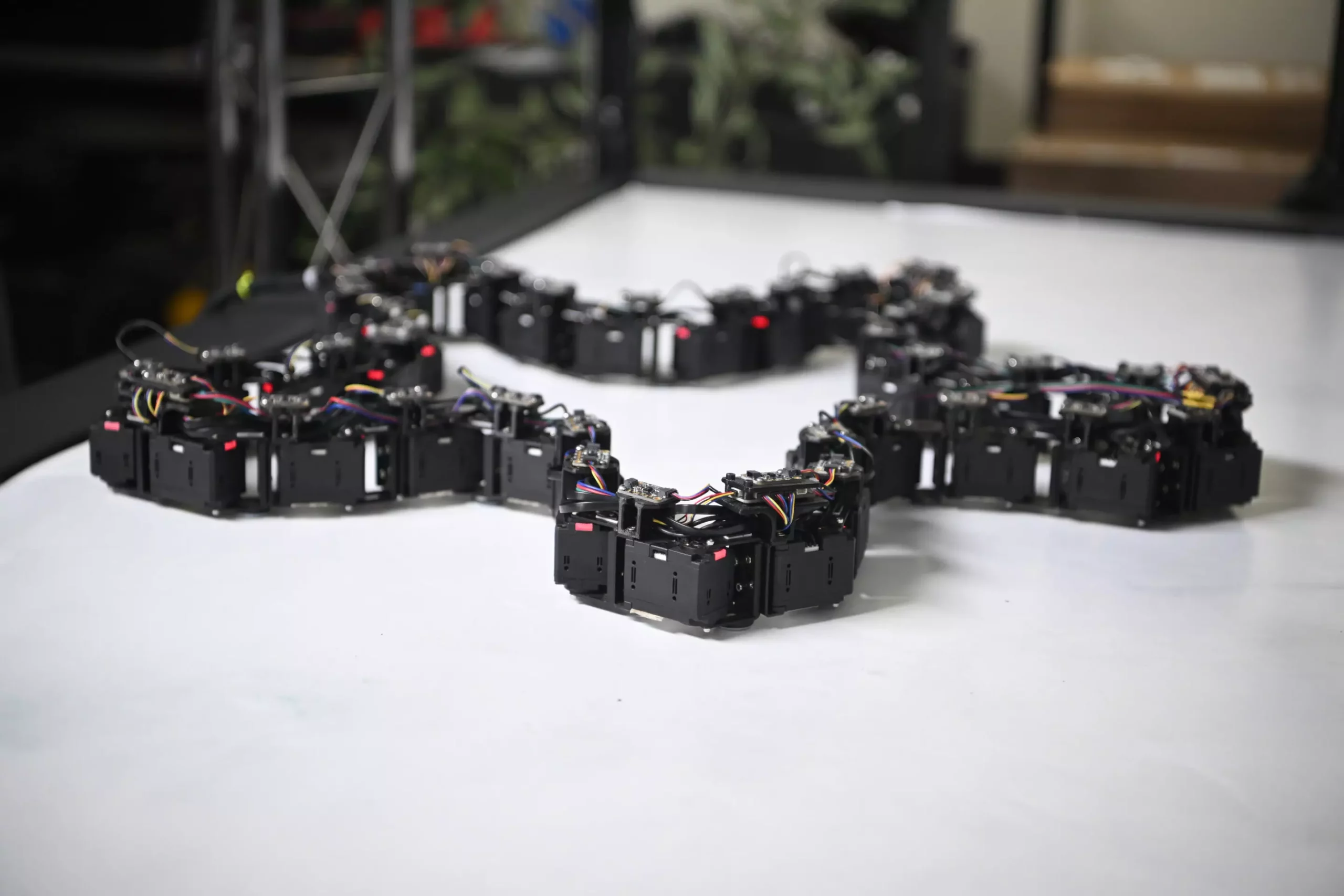West Virginia University’s (WVU) robotics team is pushing the boundaries of robot design with a groundbreaking project known as Loopy. This innovative creation is a “multicellular robot,” which comprises a flexible ring of interconnected robot cells. Unlike traditional robots that operate under strict programming and human oversight, Loopy takes on the intriguing concept of self-co-design. This means that the robot’s individual cells can work together to form shapes and execute tasks with minimal human intervention, thereby redefining the concept of autonomy in robotics.
The inspiration for Loopy stems from natural phenomena, particularly how organisms respond to environmental changes. For instance, ant swarms demonstrate remarkable coordination when gathering around food sources, and tree roots adapt by navigating around obstacles to seek water and nutrients. Drawing parallels from these natural systems, Loopy aims to utilize its multicellular structure to adapt dynamically to its surroundings. Lead researcher Yu Gu envisions a future where this robot can autonomously delineate hazardous areas, such as oil spills or toxic leaks, marking a significant leap from conventional, rigid robotic designs.
Gu’s work with Loopy challenges the prevailing “top-down” approach in robotics, where human engineers handle design, programming, and control. Instead, Loopy embodies a “swarm robotics” approach, wherein multiple simple cells interact to exhibit complex behaviors. Each of these cells, while identical in structure, operates independently—equipped with its own sensors to detect environmental stimuli and joint movement. This collective approach allows Loopy to demonstrate lifelike traits and problem-solving abilities without centralized control.
Experimental Framework for Testing Loopy
To investigate Loopy’s potential in real-world applications, Gu’s lab is prepared with a sophisticated testing environment. This setup includes overhead cameras, a motion capture system, and a projector to visualize interactions. Underneath the testing surface, heating wires simulate contaminated areas, providing a realistic scenario for evaluating Loopy’s capabilities. Each cell’s embedded temperature sensors enable the robot to respond to changes in its environment—an essential feature for assessing how well it can circle and mark contaminated zones.
Evaluating Adaptability and Resilience
The research endeavors to examine Loopy’s responses to varied situations, analyzing its adaptability in unpredictable conditions. The team, including doctoral student Trevor Smith, will evaluate how effectively Loopy navigates different materials and deals with unforeseen obstacles. A vital aspect of this research is comparing Loopy’s organic solutions against traditional programming approaches, seeking to determine whether a decentralized system is inherently more adaptable and resilient.
Gu emphasizes the unpredictability of research outcomes with Loopy, noting that many experiments lead to unexpected results, ultimately providing valuable insights that drive further exploration. Understanding the conditions that foster self-organized behaviors is crucial for the broader application of multicellular robots.
The philosophy underlying Loopy’s development is akin to the principles of permaculture, where human intervention aligns with natural processes to create sustainable ecosystems. In this regard, the collaborative relationship between humans, robots, and the environment is paramount. Gu posits that leveraging swarm intelligence can yield richer, more flexible responses to real-world challenges than traditional robotic systems.
Moreover, the potential applications for multicellular robots like Loopy are vast. Beyond leak sealing, they could be employed in interactive displays, environmental monitoring, and even in fields like agriculture, where they could assist in adaptive farming techniques. The holistic approach to robotics heralds a new era where robots do not just serve as tools but engage intelligently with their environment.
In summation, Loopy is not merely a robot; it represents a shift in how we conceptualize robotic behavior and autonomy. By embracing a decentralized, swarm-like approach to design, the WVU team has opened the door to a future where robots can learn and adapt in real time. The work being done on Loopy blurs the lines between robotics and biology, suggesting that the next generation of robots will be more fluid, resilient, and capable of facing the complexities of the real world. As we continue to explore these avenues, the implications for technological advancement and practical applications are bound to be transformative.


Leave a Reply